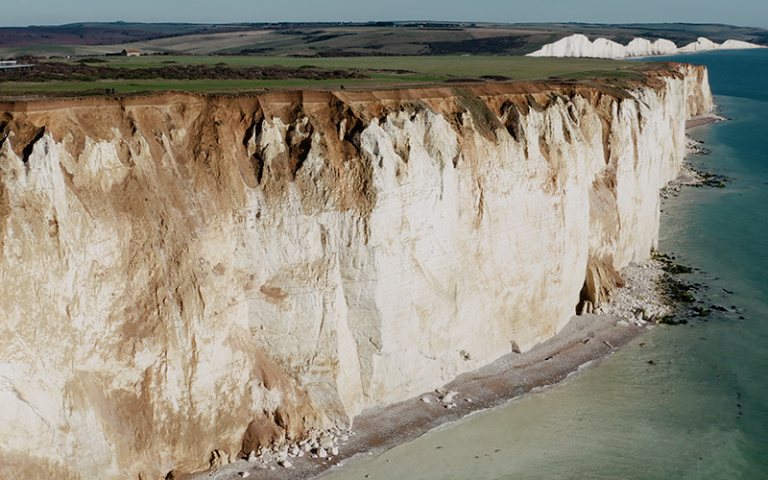The hidden archaeological potential of nationally important heritage site Seaford Head has been uncovered through a project involving the UCL Institute of Archaeology.

The pilot study involving researchers from Archaeology South-East (ASE), part of UCL Institute of Archaeology, aimed to investigate how an archaeological site at risk from climate change accelerated coastal erosion can be rapidly recorded and communicated to the public before it is lost.
Located in East Sussex, Seaford Head - which includes an Iron Age hillfort and provides the iconic view of the Seven Sisters cliffs - has seen significant cliff collapses in recent years, and erosion is expected to increase in frequency and severity with predicted rises in rainfall and storm events related to climate change.
The team identified several "anomalies" in the area, which researchers say could be archaeological features related to habitation within the Iron Age hill fort and the construction of a Bronze Age barrow - excavated by Pitt Rivers in the 19th Century.
To establish their findings, researchers undertook a desk-based assessment, a geophysical survey, and a topographic and drone survey.
The drones were used to take hundreds of photographs of the site, which were then rectified using photogrammetry into highly accurate images and a topographic model, augmented with handheld survey equipment.
The drones enabled the researchers to photograph and record otherwise inaccessible or difficult to access places, allowing the team to identify the potential archaeological features in the roughly 80m high cliff section.
Jon Sygrave, Project Manager ASE UCL, said: "We're very excited by the results generated by this rapid survey of Seaford Head. The detail of the archaeological features uncovered by the cliff photogrammetry is amazing and the anomalies identified by the geophysical survey provide targets for future investigation of the site we didn't have before."
To communicate the results of the project, approaching issues of potential loss of sites such as this due to climate change accelerated coastal erosion, the researchers have today released their results to the public via a video and podcast discussion.
Sygrave added: "It also a huge benefit to have the capacity to tell the story of our work and the issues behind it through the films and podcast, I hope they provide food for thought."
Dr Emily Johnson, Senior Zooarchaeologist at ASE UCL, said "A key element of the Seaford Head Project is that it aims to be a replicable study that other communities and heritage practitioners can apply to their own at-risk heritage to inform future management decisions.
"An important part of that is communicating our findings to the public to hopefully engage them in that conversation."
YouTube Widget Placeholderhttps://www.youtube.com/watch?v=KzOa2_vI3y0
These excavations showed that the site of a Bronze Age Bowl Barrow (c. 1500-2400 BC) was later surrounded by a large Iron Age Hillfort (c. 400BC-100AD). The current project has shown that much more archaeological evidence relating to these and other periods survives on the site and could be the subject of further investigation, which the researchers hope will take place in the near future.
The pilot project was funded by English Heritage, and the films and podcasts were funded by the South Downs National Park Authority.






